Best Things to Do in Hoi An, Vietnam – 2025 Travel Guide
Hoi An is one of those rare places that feels like it was frozen in time, just for you to discover. With its lantern-lit streets, ancient yellow-washed buildings, and the soft flow of the Thu Bon River cutting through the heart of town, Hoi An is pure magic from the moment you arrive.
Once a major Southeast Asian trading port, Hoi An still carries the echoes of Chinese, Japanese, and European influence in its architecture, food, and culture. These days, it’s a UNESCO World Heritage Site, and whether you’re here for the food, the history, the tailor shops, or simply the dreamy vibe, Hoi An never fails to charm.
The History of Hoi An as a Tourist Destination
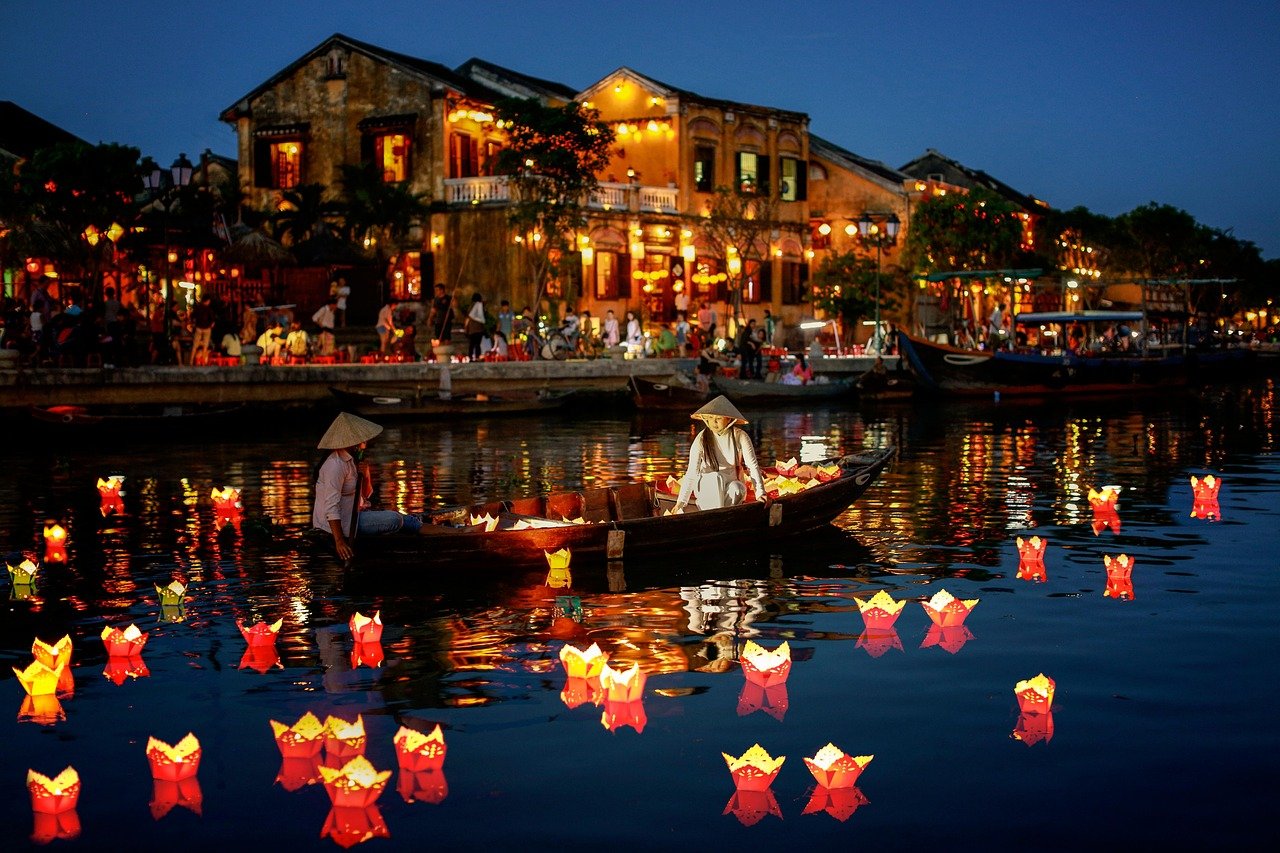
Long before Hoi An became a go-to spot for travelers with cameras and craving for bánh mì, it was one of the most important trading ports in Southeast Asia. Between the 15th and 19th centuries, merchants from China, Japan, India, and even Europe flocked here, bringing with them spices, silk, ceramics, and ideas.
Fast-forward to the late 20th century—while other cities in Vietnam were modernizing rapidly, Hoi An’s economic lull ended up being a blessing in disguise. Its Old Town remained remarkably preserved, untouched by war or urban sprawl. In 1999, UNESCO officially recognized Hoi An as a World Heritage Site, and the quiet town began its transformation into a beloved destination for tourists seeking a mix of culture, history, and relaxation.
Best Things to do in Hoi An
Once a key trading port for Chinese, Indian, and Arab merchants, Manila became the crown jewel of Spanish colonization in the Philippines starting in the 16th century. Intramuros, the historic walled city, was at the heart of this colonial hub—filled with stone churches, grand government buildings, and cobbled streets that still echo the past.
Hoi An Ancient Town
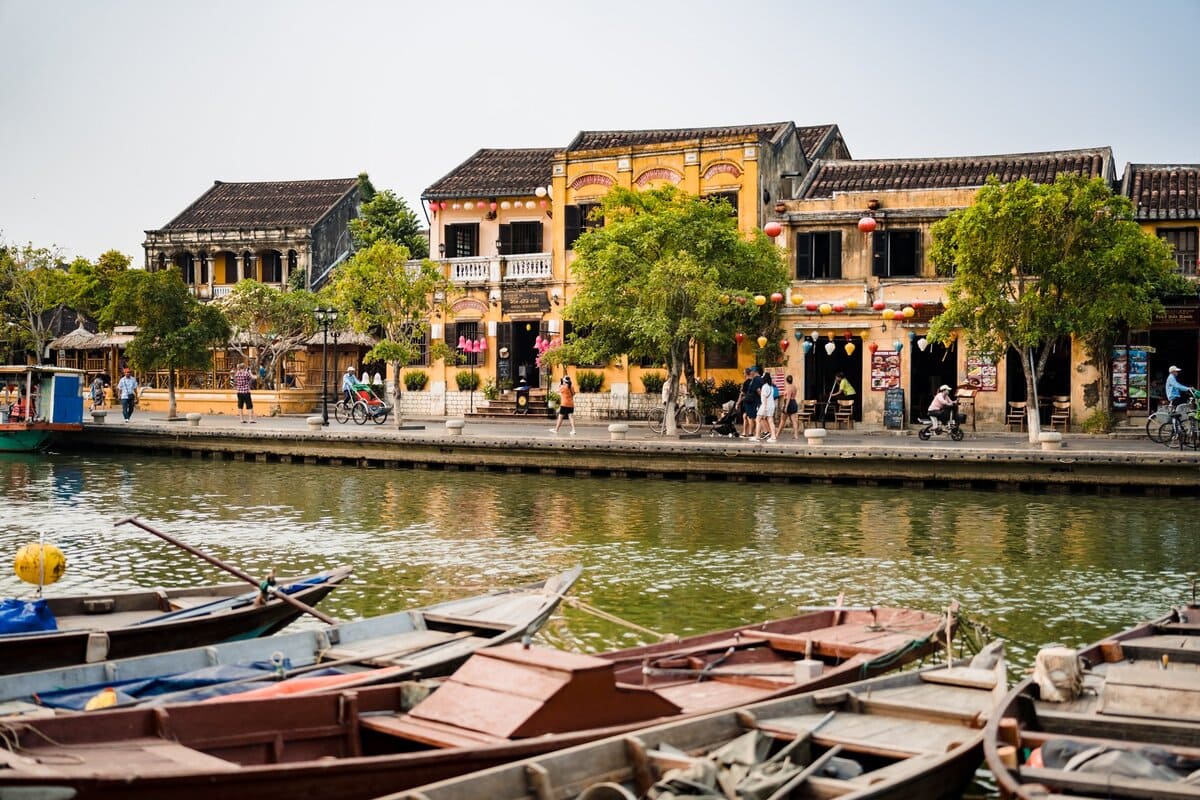
You can’t say you’ve been to Hoi An without walking through its historic Old Town. A maze of mustard-yellow shophouses, wooden balconies, and vine-draped courtyards, this area is closed to motorbikes during most of the day—making it perfect for wandering. Many of the buildings here are centuries old and beautifully preserved, offering a peek into Hoi An’s multicultural merchant past.
Japanese Covered Bridge (Chùa Cầu)
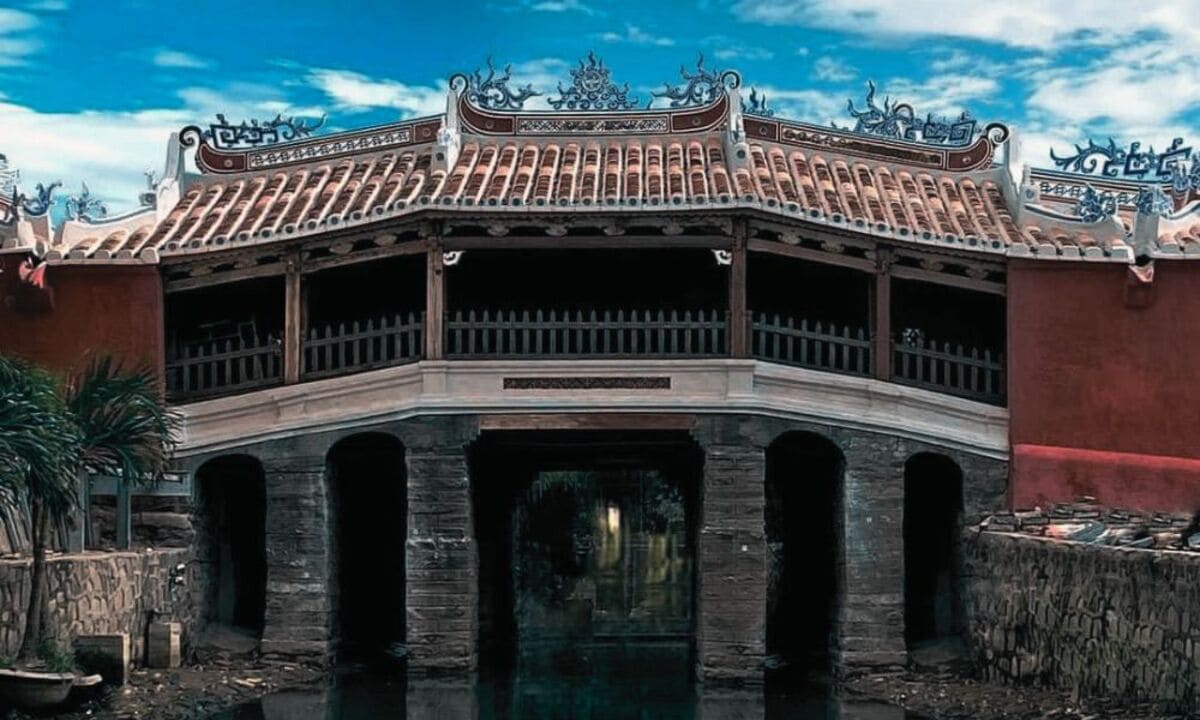
Built in the 1590s by the Japanese community, this beautiful arched bridge is one of Hoi An’s most iconic sights. Not just a pretty spot for photos, the bridge also has a small temple built into its side. According to legend, it was constructed to calm a sea monster that threatened the town. Whether you believe the myth or not, it’s a peaceful and charming landmark that beautifully bridges cultures—literally and figuratively.
Hoi An Riverside
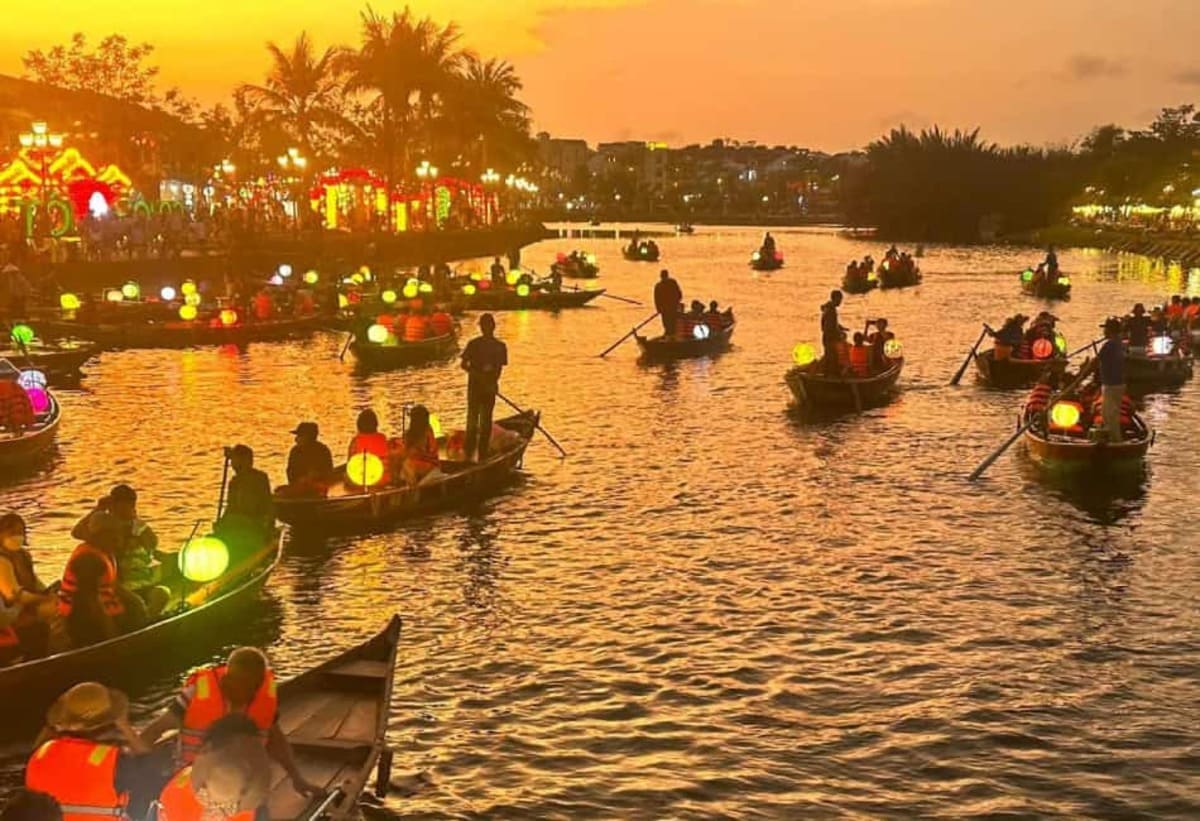
Stroll along the banks of the Thu Bon River for some of the most scenic views in town. During the day, it’s a chill spot to grab coffee and watch the boats glide by. At night, the riverside comes alive with street food stalls, live music, and floating lanterns you can release with a wish. It’s especially romantic if you hop on a sampan boat ride—just be sure to have your camera ready.
Fukian Assembly Hall (Phuc Kien)
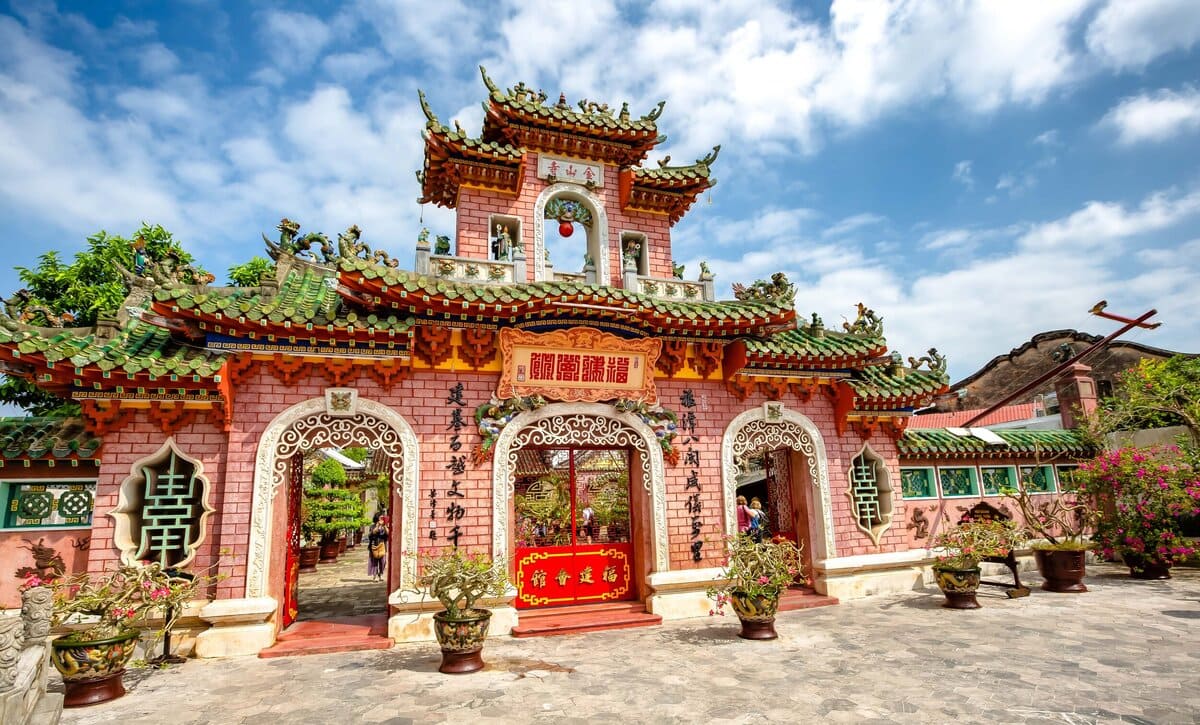
This stunning 17th-century Chinese temple is one of several assembly halls built by Hoi An’s immigrant communities. Originally a gathering place for people from Fujian, China, it now stands as a colorful, incense-filled tribute to their culture. The dragon statues, ornate gates, and peaceful courtyard make it one of the most photogenic spots in the Old Town.
Tra Que Vegetable Village
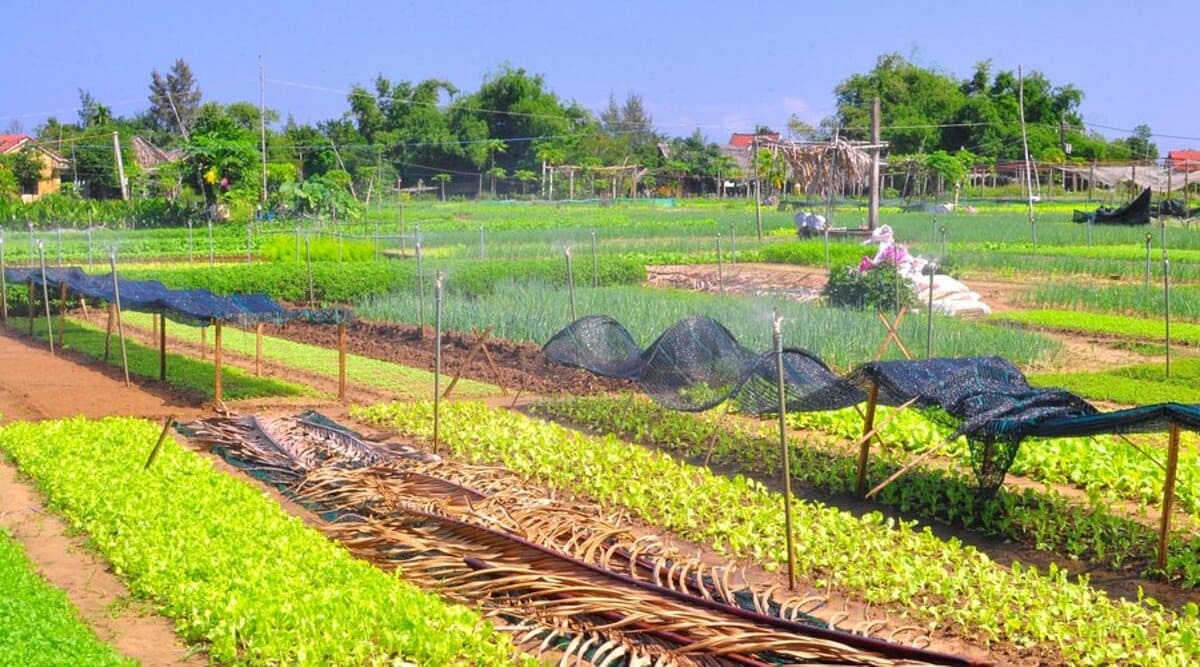
Just a short bike ride from Hoi An’s center, this lush little village offers a look at local farming life. Tra Que is famous for growing aromatic herbs using centuries-old organic techniques. You can take a cooking class here, walk through the fields, or try your hand at planting and harvesting. It’s a peaceful escape from the tourist trail.
An Bang Beach
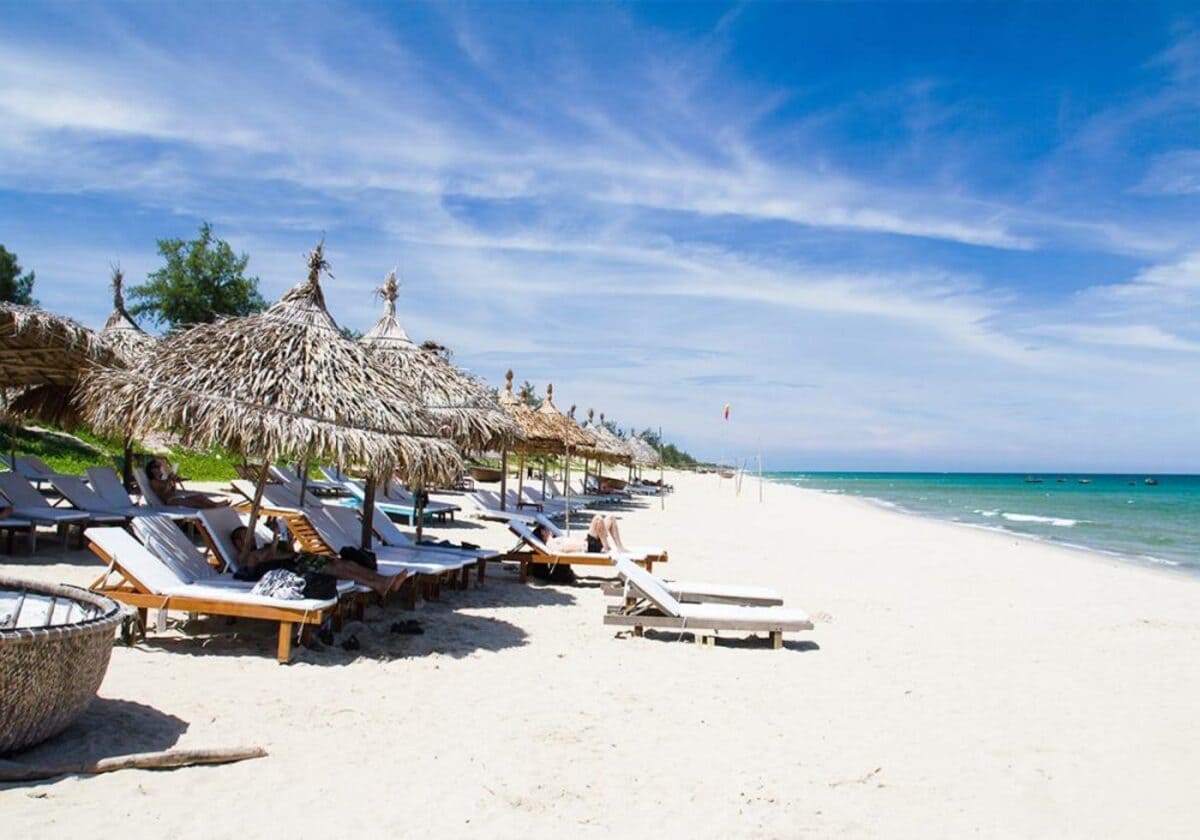
Hoi An isn’t just about the Old Town—its nearby beaches are gorgeous too. An Bang is the local favorite, with soft sand, gentle waves, and a lineup of cozy beachfront bars and restaurants. You can rent a lounger for the day, order a fresh coconut, and let time slow down. It’s ideal for swimming, sunbathing, or catching a sunset with a cold drink in hand.
My Son Sanctuary

About an hour’s drive from Hoi An, My Son is a cluster of ancient Hindu temples set in a jungle valley. Built by the Champa Kingdom between the 4th and 14th centuries, it’s often called Vietnam’s “mini Angkor Wat.” With moss-covered ruins and misty hills all around, it feels like stepping into another world.
Tan Ky Old House
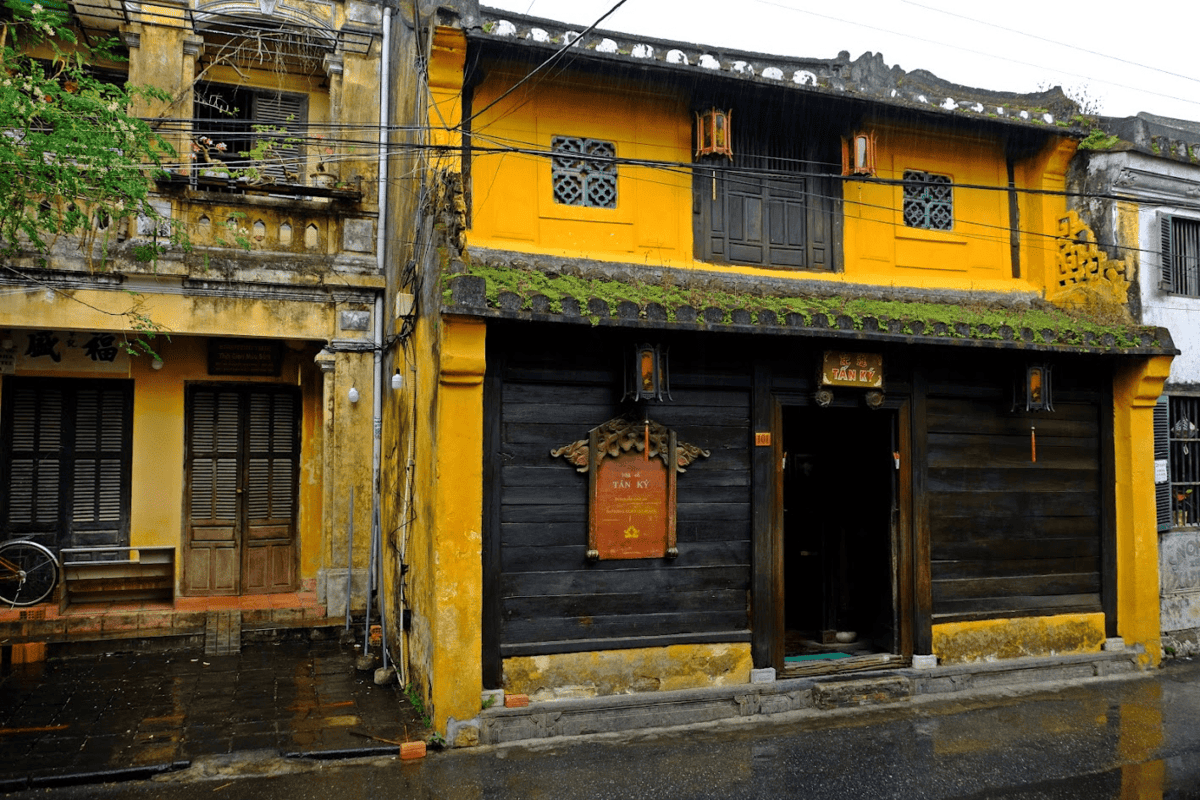
This 18th-century home is one of the most well-preserved merchant houses in Hoi An. Seven generations of the same family have lived here, and their story is told through the architecture and antiques still on display. The mix of Vietnamese, Japanese, and Chinese design elements speaks to the town’s international trading history. Guided tours are quick, informative, and surprisingly intimate.
Cam Thanh Coconut Village

For something a little different, head to Cam Thanh and hop into a round bamboo basket boat. Guided by locals, you’ll float through a network of water coconut palms and even enjoy a bit of bamboo-boat spinning if you’re up for the fun. It’s a lighthearted, memorable way to see a more rural side of Hoi An—and you’ll likely laugh the whole way through.
Best Food in Hoi An
Hoi An’s rich culture results in a unique and surprising amount of variety in its cuisine. There’s so much to sample, and it stands out even among other Vietnamese cities. Here, we’re going to list some must tries, as well as where you can find them.
Cao Lầu

Cao Lầu is Hoi An’s most iconic dish—and unlike anything you’ll find elsewhere in Vietnam. The chewy noodles are made using water from an ancient well, traditionally mixed with lye made from wood ash. Topped with slices of barbecued pork, fresh herbs, and crispy rice crackers, it’s a beautiful blend of textures.
Where to try it: Quán Cao lầu Bá Lễ is a tiny, no-frills eatery that’s been dishing out the same recipe for generations.
White Rose Dumplings (Bánh Bao Bánh Vạc)
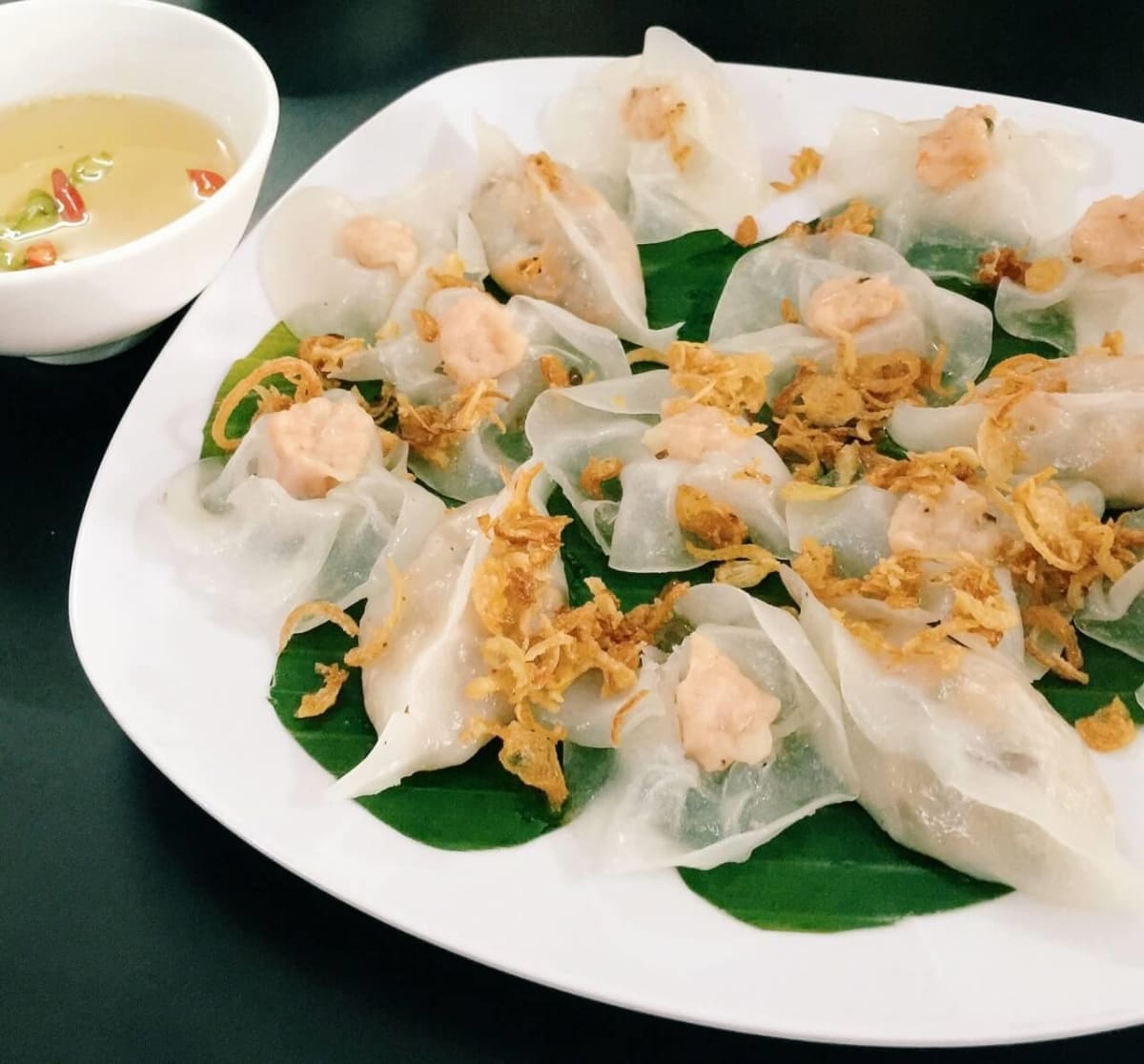
These delicate dumplings look like little flowers—hence the name. Made from translucent rice dough and stuffed with minced shrimp or pork, they’re carefully folded by hand and topped with crispy garlic and a dash of fish sauce. The recipe is a family secret, and the same household supplies them to most restaurants in town.
Where to try it: Head straight to White Rose Restaurant at 533 Hai Bà Trưng Street. It’s the only place that makes the original dumplings, and you can even watch them being handmade before they land on your plate.
Mì Quảng
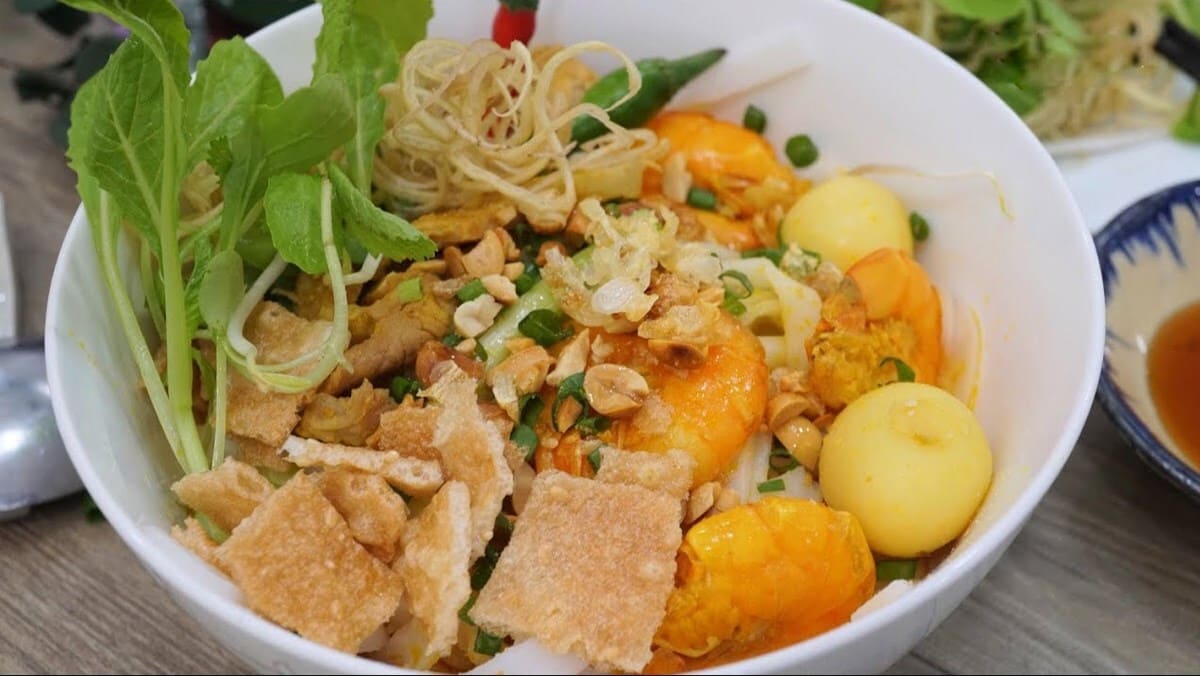
Mì Quảng might be a central Vietnamese staple, but it hits differently in Hoi An. Thick turmeric-yellow noodles come swimming in a shallow pool of rich broth, with toppings like pork, shrimp, quail eggs, and crushed peanuts. Fresh herbs and crispy rice crackers give it extra crunch. It’s comforting, colorful, and full of personality.
Where to try it: Mì Quảng Ông Hai is a reliable local favorite that gets the texture and balance of this dish just right.
Com Gà (Hoi An Chicken Rice)
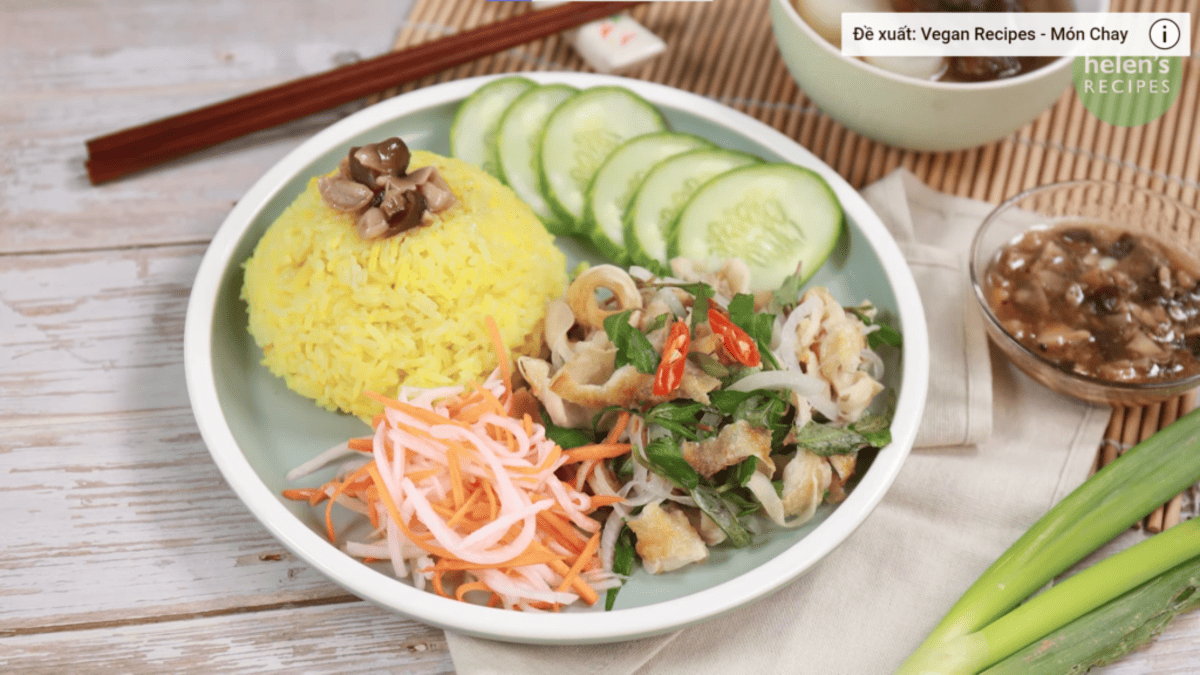
Think Vietnamese Hainanese chicken rice, but with a bit more bite. Com Gà features shredded poached chicken tossed with herbs, pickled vegetables, and sometimes a zingy chili-lime dressing. The rice is cooked in chicken broth with turmeric, giving it a warm golden hue and delicious depth of flavor.
Where to try it: Com Gà Bà Buội at 22 Phan Chu Trinh is a legend in town and often packed with both locals and curious travelers.
Bánh Mì
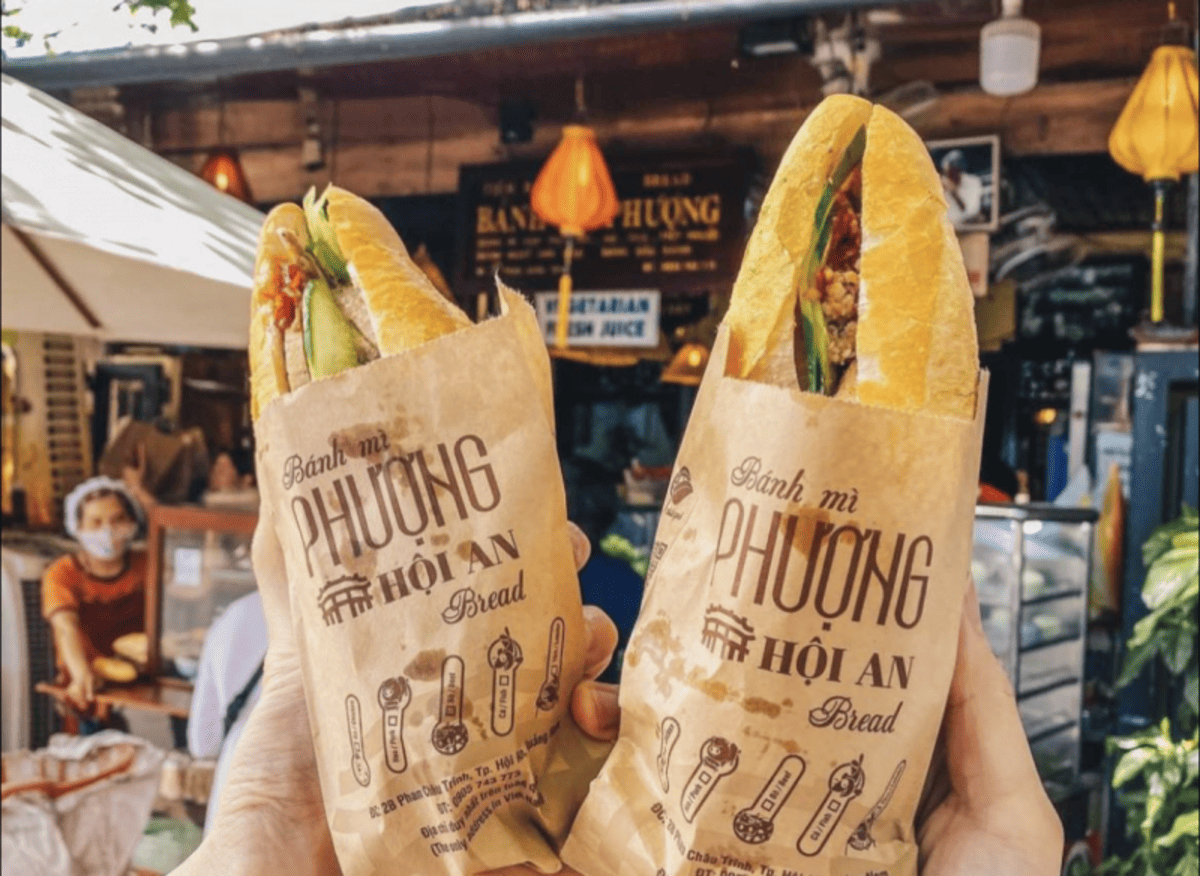
Yes, you can get bánh mì anywhere in Vietnam—but Hoi An has its own take. Expect a warm, crispy baguette packed with grilled meats, pickled veg, herbs, and sometimes a surprising hit of chili jam or pâté. It’s street food perfection and one of the cheapest, tastiest bites you’ll find.
Where to try it: Bánh Mì Phượng is a celebrity on the street food scene—Anthony Bourdain called it the best bánh mì in Vietnam, and he wasn’t wrong. Find it on 2B Phan Châu Trinh.
Grilled Pork Skewers with Rice Paper (Thịt Nướng Cuốn Bánh Tráng)
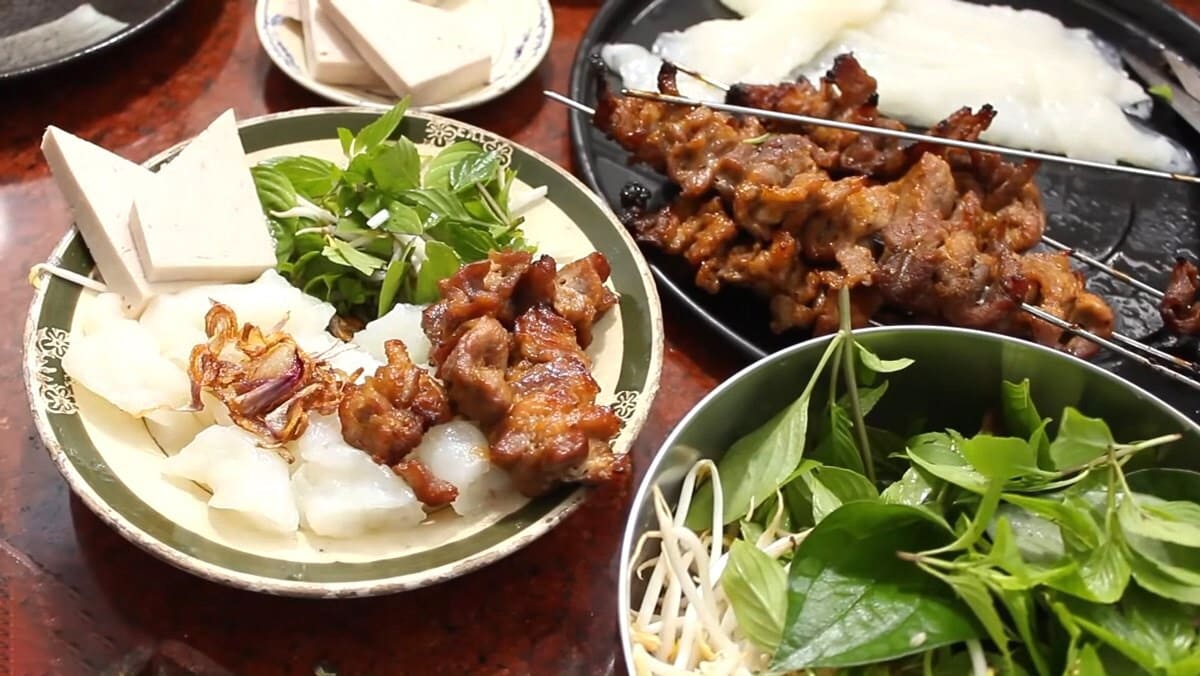
This is Hoi An’s DIY dish: you get juicy grilled pork skewers, rice paper, fresh herbs, cucumber, and pickles, and you roll your own spring rolls. The best part is dipping it all into a flavorful peanut or fermented soybean sauce. It’s messy, interactive, and incredibly tasty.
Where to try it: The stalls along An Bang Beach are perfect for this—you’ll get great food with a sea breeze on the side. Try Beach Bar Soul Kitchen for a laid-back vibe.
Chè (Vietnamese Sweet Soup)
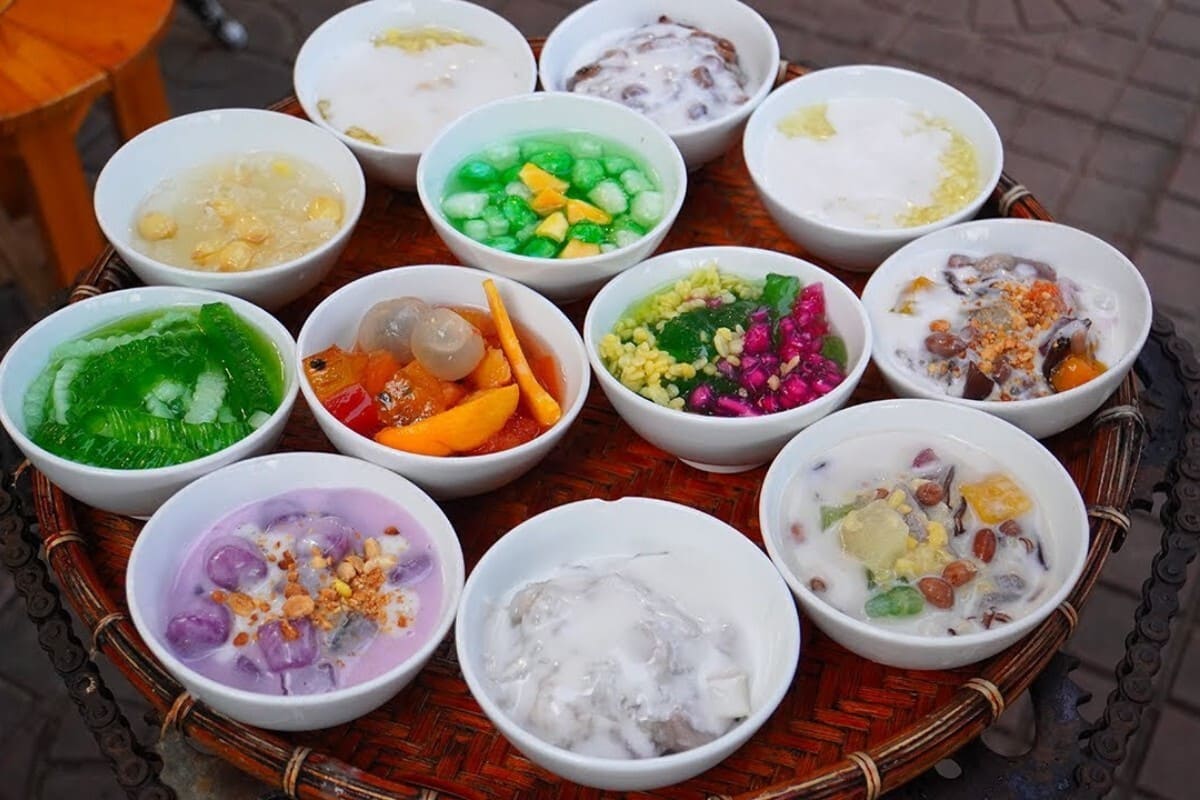
Hoi An nights are made for a cup of chè—a cold, colorful dessert drink made with jellies, beans, coconut milk, and sticky rice. It’s as fun to eat as it is refreshing in the tropical heat. Some versions come in layers, some are fruitier, but all are sweet and satisfying.
Where to try it: Visit Chè Bà Thọ near the Central Market for a classic version with a local flair.
Best Shopping Spots in Hoi An
Let’s dive into the best shopping spots in Hoi An, where tradition and creativity come together in every aisle, boutique, and market stall. Rather than soulless malls, Hoi An offers a blend of artisan craft, tailor-made fashion, and charming souvenirs—each with a story to tell.
Hoi An Central Market
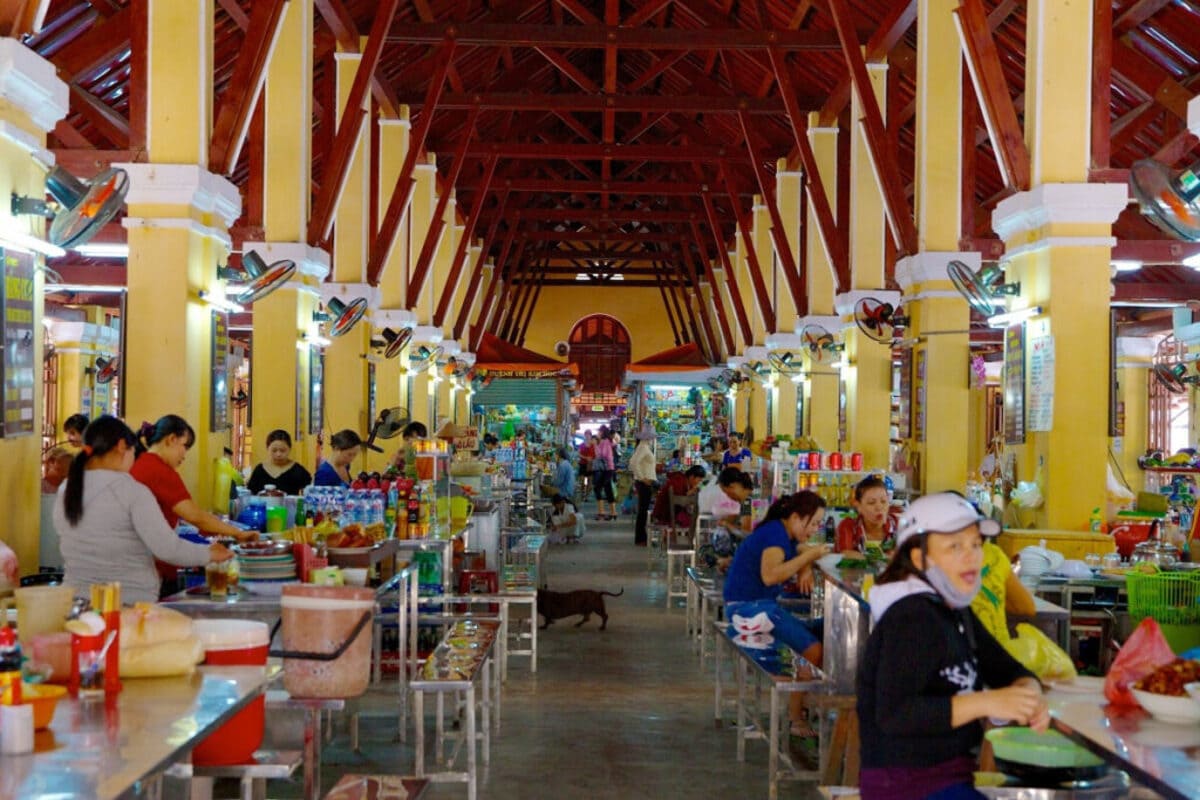
Right on the edge of the Old Town and buzzing from dawn until dusk, Hoi An Central Market is the heart of local commerce. Inside, you’ll find fresh produce, spices, handmade kitchen tools, and piles of herbs that give Hoi An cuisine its signature kick. The fabric section is especially worth a visit if you’re planning to get something tailor-made—many tailors source their materials right here.
Just outside the market building, stalls spill into the streets selling woven baskets, hats, street food, and souvenirs. It’s a sensory overload, but in the best possible way.
Hoi An Night Market
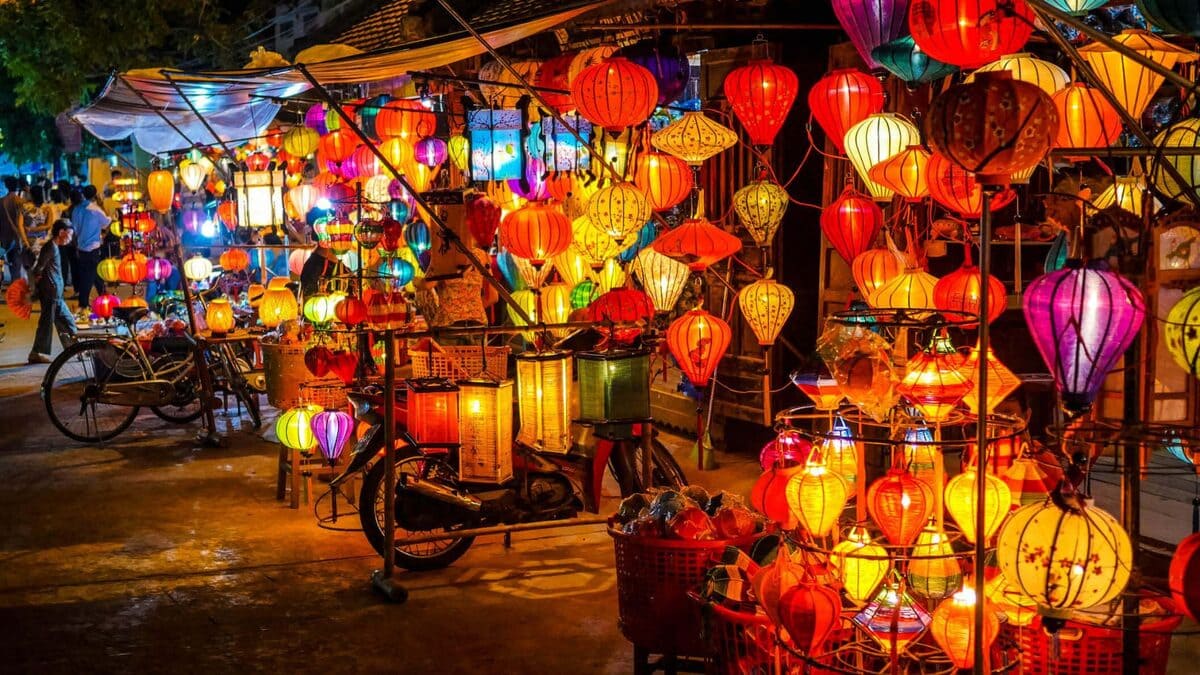
Set on the lantern-lit Nguyễn Hoàng Street across the river from the Old Town, the Night Market is one of Hoi An’s most magical experiences. The highlight? Rows upon rows of hand-painted silk lanterns glowing in every color imaginable. You’ll also find stalls selling beaded jewelry, handmade soaps, trinkets, and bite-sized snacks.
It’s not just a place to shop—it’s an experience. Go just after sunset when the crowds thicken, the air cools, and everything seems to glow.
Reaching Out Arts & Crafts
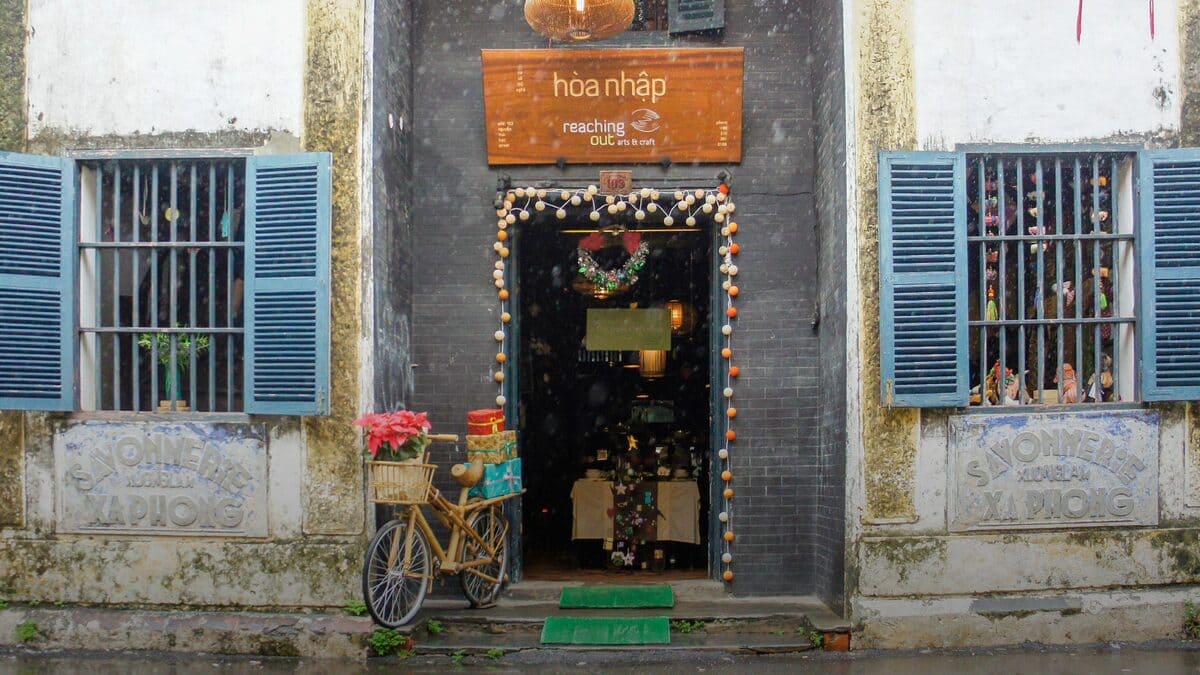
For ethically sourced, exquisitely crafted souvenirs, Reaching Out is unbeatable. This social enterprise employs and empowers artisans with disabilities to create stunning ceramics, textiles, home decor, and tea sets. Every piece is handmade with care and often stamped with the signature of its maker.
The shop is located in a quiet heritage building in the Old Town, and just stepping inside feels calming and meaningful. You can even visit their tea house next door, where orders are placed with written cards to maintain a tranquil atmosphere.
When Is the Best Time to Visit Hoi An?
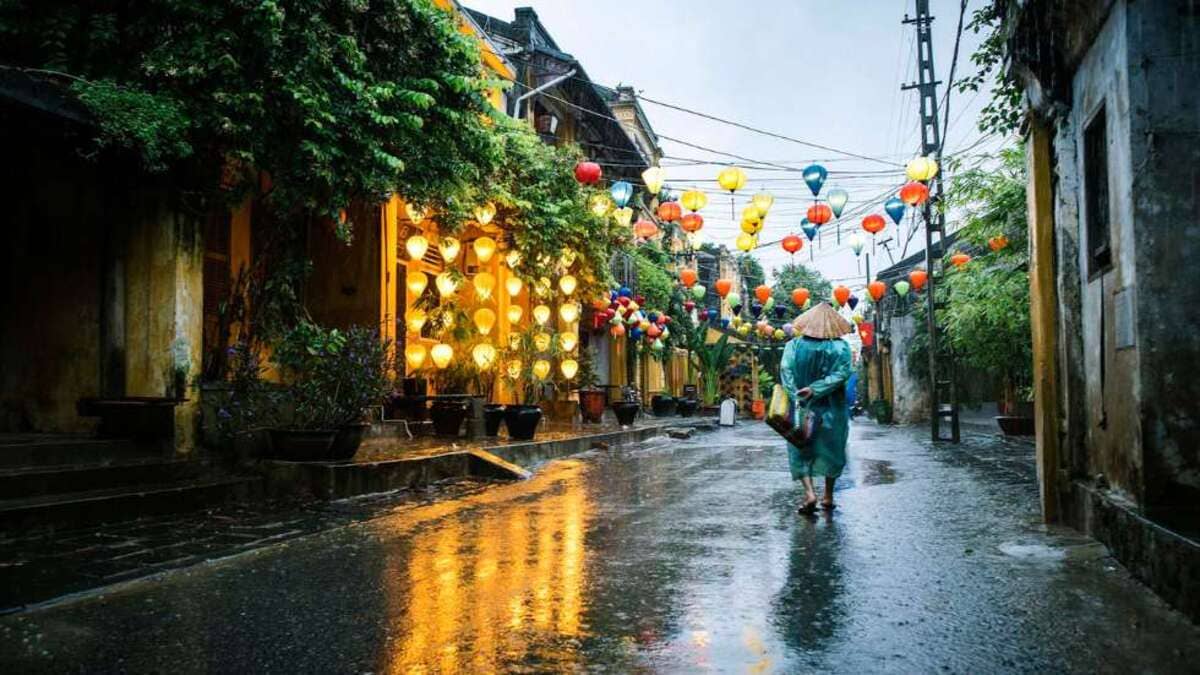
Hoi An enjoys a tropical climate, which means warm weather all year—but the best time to visit really depends on what you’re after: clear skies, colorful festivals, or fewer crowds.
For most travelers, the ideal time to visit Hoi An is from February to April. During these months, the weather is dry, the humidity is lower, and temperatures are comfortably warm. It’s perfect for exploring the lantern-lit streets, lounging on An Bang Beach, or heading out to the rice paddies by bike.
May to August marks the hotter, more humid season. It’s still a great time to visit if you don’t mind the heat, especially for beach lovers. This is also when Hoi An sees an increase in domestic tourism, so the town gets more hectic and lively.
How Many Days Do You Need in Hoi An?
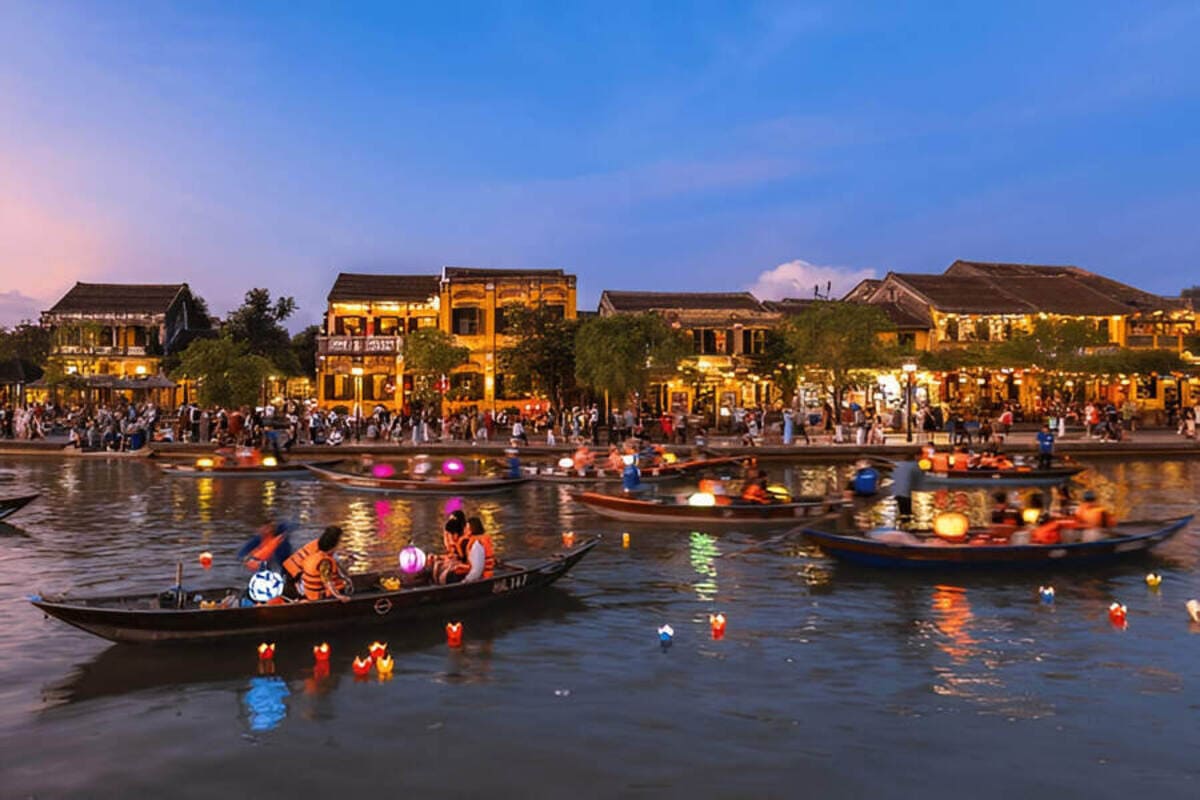
Hoi An may be small, but don’t let its size fool you—it’s packed with things to do, see, and taste. Most travelers find that 3 to 4 days is the sweet spot. It gives you just enough time to enjoy the Old Town, soak in some beach time, and maybe even explore the countryside on a day trip.
If you’re tight on time, you can squeeze the essentials into 2 days—but it’ll be a little rushed. On the other hand, if you’re the type who loves slow travel, Hoi An is the kind of place where staying a week doesn’t feel like too much.
Where to Stay in Hoi An

Hoi An has something for every type of traveler, whether you’re a solo backpacker, a couple on a honeymoon, or a family seeking comfort and calm. From heritage stays in the heart of the Old Town to breezy beach resorts and budget-friendly hostels, here are some great options to consider:
- Little Riverside Hoi An – Boutique riverside hotel near the Old Town with a rooftop pool and spa.
- La Siesta Hoi An Resort & Spa – Stylish resort with tropical gardens, multiple pools, and family-friendly vibes.
- Hoi An Ancient House Village Resort & Spa – Tranquil mid-range option nestled between rice fields and town.
- An Bang Garden Homestay – Cozy, beachside homestay near An Bang with warm local hospitality.
- Hoianese Heritage Hotel – Clean, social and affordable hotel ideal for backpackers and solo travelers.
- Almanity Hoi An Wellness Resort – Wellness-focused resort with daily spa treatments included.
- The Earth Villa – Affordable boutique hotel with a homely feel and great service.
Getting Around in Hoi An

Getting around Hoi An is refreshingly easy. The Ancient Town is mostly pedestrian-only during the day, so you can comfortably explore its lantern-lit streets on foot. Bicycles are a popular and affordable way to get around, especially if you want to ride out to the beach or nearby villages like Tra Que.
For longer distances or a bit more speed, motorbikes are available to rent and are a good option if you’re confident riding. If you prefer not to drive, Grab (the local ride-hailing app) is widely used and convenient for short rides or trips to Da Nang. For day trips or comfort, many travelers book a private car, allowing for more flexibility.
Conclusion

Hoi An is the kind of place that lingers with you long after you’ve left. Between its lantern-lit charm, flavorful local dishes, friendly locals, and laid-back pace, it strikes that rare balance between cultural richness and total relaxation. Regardless of why you visit, Hoi An invites you to slow down and soak it all in.
Please follow my WhatsApp Channel for the latest updates. You can also Contact Me if you need any further assistance.






